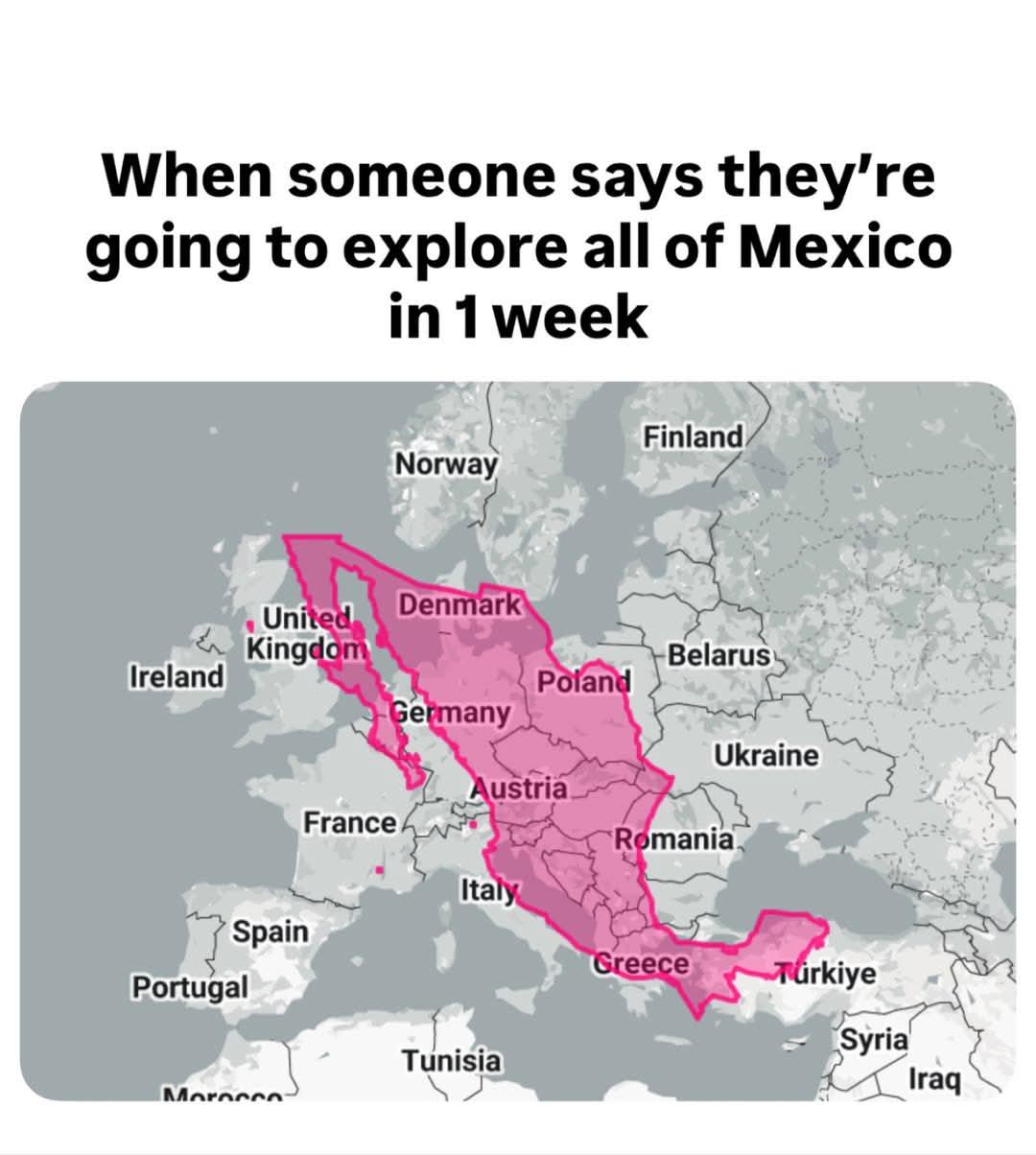Mexico Size Comparison Map with Europe


David Chen
Data Visualization Specialist
David Chen is an expert in transforming complex geographic datasets into compelling visual narratives. He combines his background in computer science ...
Geographic Analysis
What This Map Shows
This map provides a clear visual comparison between the size of Mexico and various European countries, illustrating the vast geographical differences between these two regions. By overlaying the landmass of Mexico onto a map of Europe, viewers can better understand how the two areas stack up against each other in terms of land area. Such visualizations often reveal surprising insights about scale and geography that might not be evident through numbers alone.
Deep Dive into Mexico's Geography
Mexico, the third-largest country in Latin America, covers an area of approximately 1.96 million square kilometers (about 758,449 square miles). This landmass is diverse, featuring a variety of landscapes, from arid deserts in the north to lush rainforests in the south, not to mention its stunning coastlines along both the Pacific Ocean and the Gulf of Mexico. Interestingly, Mexico's geographical diversity is reflected in its climate zones, which range from temperate to tropical, impacting everything from agriculture to biodiversity.
Have you ever wondered how Mexico's size compares to larger European countries? For instance, France, the largest country in the European Union, has a land area of about 551,695 square kilometers (213,011 square miles), making it less than a third of Mexico's size. However, when you consider smaller nations like the United Kingdom (approximately 243,610 square kilometers or 94,058 square miles) or Italy (about 301,340 square kilometers or 116,347 square miles), the size disparity becomes even more pronounced.
Moreover, Mexico's geographical features play a critical role in its demographics and settlement patterns. The central plateau, surrounded by mountain ranges, is where most of the population resides, while the coastal areas are heavily trafficked by tourists seeking the sun and sea. This distribution highlights how geography influences human activity, with urban centers like Mexico City, Guadalajara, and Monterrey thriving amid the diverse landscapes.
Regional Analysis
When we break down the comparison further, we see that the northern states of Mexico, such as Chihuahua and Sonora, are particularly vast. For instance, Chihuahua itself is larger than many European countries, including Austria and Portugal. In contrast, the densely populated regions of Europe, such as the Benelux countries—Belgium, the Netherlands, and Luxembourg—are significantly smaller in land area but have much higher population densities.
Interestingly, while Mexico has a large land area, its population of approximately 126 million people leads to a density of around 64 people per square kilometer. In contrast, countries like the Netherlands have a staggering density of over 400 people per square kilometer despite being much smaller in size. This difference can often lead to varied urban planning approaches, resource distribution, and environmental management strategies between Mexico and European countries.
Significance and Impact
Understanding the geographical comparisons between Mexico and Europe is essential for various reasons. It highlights not only the physical size differences but also the implications for economic development, resource management, and environmental stewardship. For instance, the vast agricultural lands of Mexico allow for diverse crop production, which is vital for both local consumption and export.
Moreover, with current trends emphasizing sustainability and climate change, examining how different regions manage their land can provide insights into best practices. Mexico's approach to conservation in areas like the Yucatán Peninsula contrasts sharply with urbanized European nations facing land use pressures.
As global population continues to grow and climate change impacts become more pronounced, understanding these geographical nuances will be critical for policymakers and planners alike. Future projections suggest that urban areas will continue to expand, making it crucial to balance development with sustainability efforts.
In conclusion, the comparison of Mexico's size to that of Europe is not just a matter of numbers; it delves into the intricacies of geography, demographics, and the lived experiences of people across these regions. By engaging with such visualizations, we can foster a deeper appreciation for how geography shapes our world and influences our future.
Visualization Details
- Published
- October 26, 2025
- Views
- 20
Comments
Loading comments...